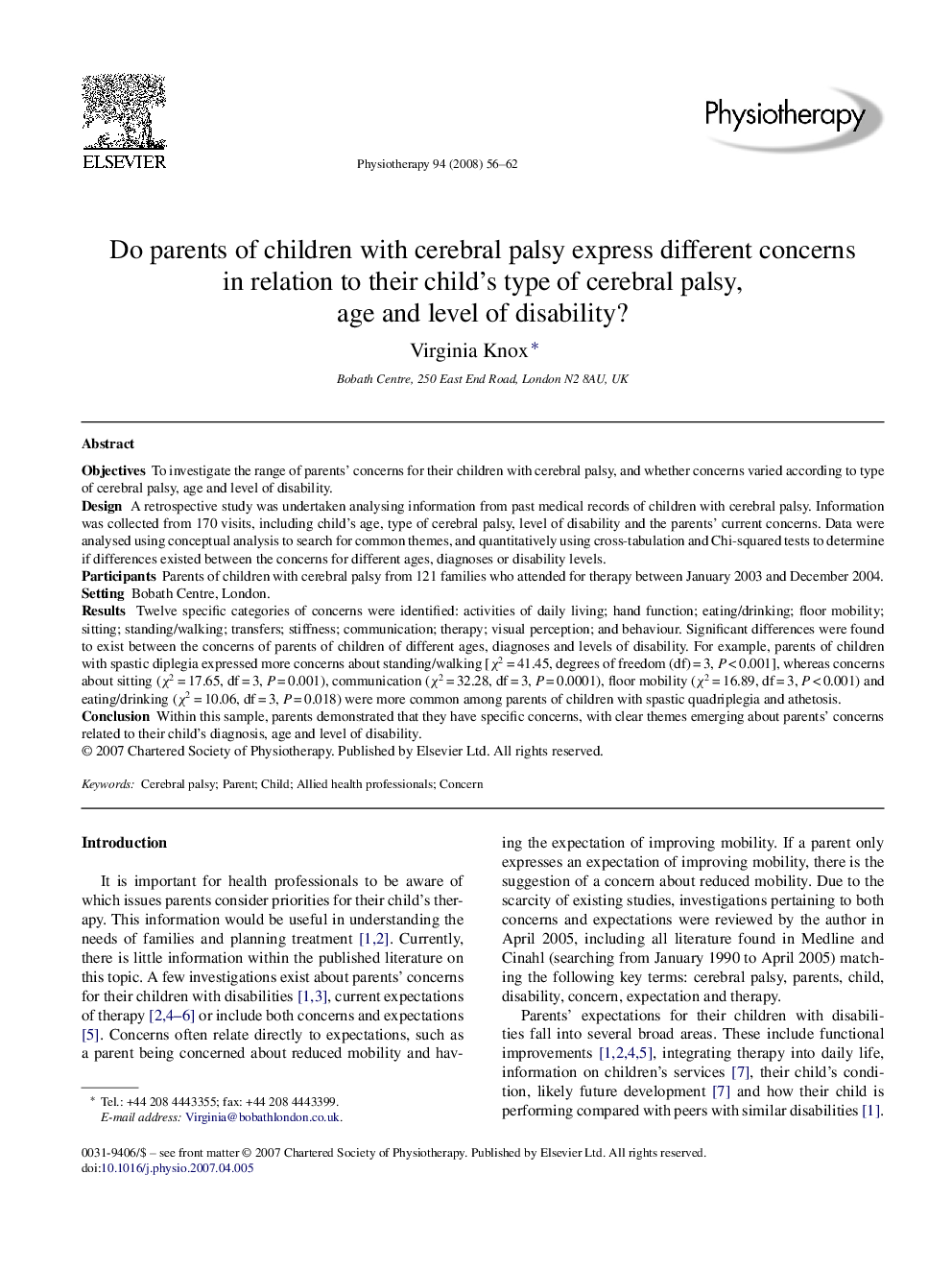| کد مقاله | کد نشریه | سال انتشار | مقاله انگلیسی | نسخه تمام متن |
|---|---|---|---|---|
| 2627456 | 1136077 | 2008 | 7 صفحه PDF | دانلود رایگان |

ObjectivesTo investigate the range of parents’ concerns for their children with cerebral palsy, and whether concerns varied according to type of cerebral palsy, age and level of disability.DesignA retrospective study was undertaken analysing information from past medical records of children with cerebral palsy. Information was collected from 170 visits, including child's age, type of cerebral palsy, level of disability and the parents’ current concerns. Data were analysed using conceptual analysis to search for common themes, and quantitatively using cross-tabulation and Chi-squared tests to determine if differences existed between the concerns for different ages, diagnoses or disability levels.ParticipantsParents of children with cerebral palsy from 121 families who attended for therapy between January 2003 and December 2004.SettingBobath Centre, London.ResultsTwelve specific categories of concerns were identified: activities of daily living; hand function; eating/drinking; floor mobility; sitting; standing/walking; transfers; stiffness; communication; therapy; visual perception; and behaviour. Significant differences were found to exist between the concerns of parents of children of different ages, diagnoses and levels of disability. For example, parents of children with spastic diplegia expressed more concerns about standing/walking [χ2 = 41.45, degrees of freedom (df) = 3, P < 0.001], whereas concerns about sitting (χ2 = 17.65, df = 3, P = 0.001), communication (χ2 = 32.28, df = 3, P = 0.0001), floor mobility (χ2 = 16.89, df = 3, P < 0.001) and eating/drinking (χ2 = 10.06, df = 3, P = 0.018) were more common among parents of children with spastic quadriplegia and athetosis.ConclusionWithin this sample, parents demonstrated that they have specific concerns, with clear themes emerging about parents’ concerns related to their child's diagnosis, age and level of disability.
Journal: Physiotherapy - Volume 94, Issue 1, March 2008, Pages 56–62